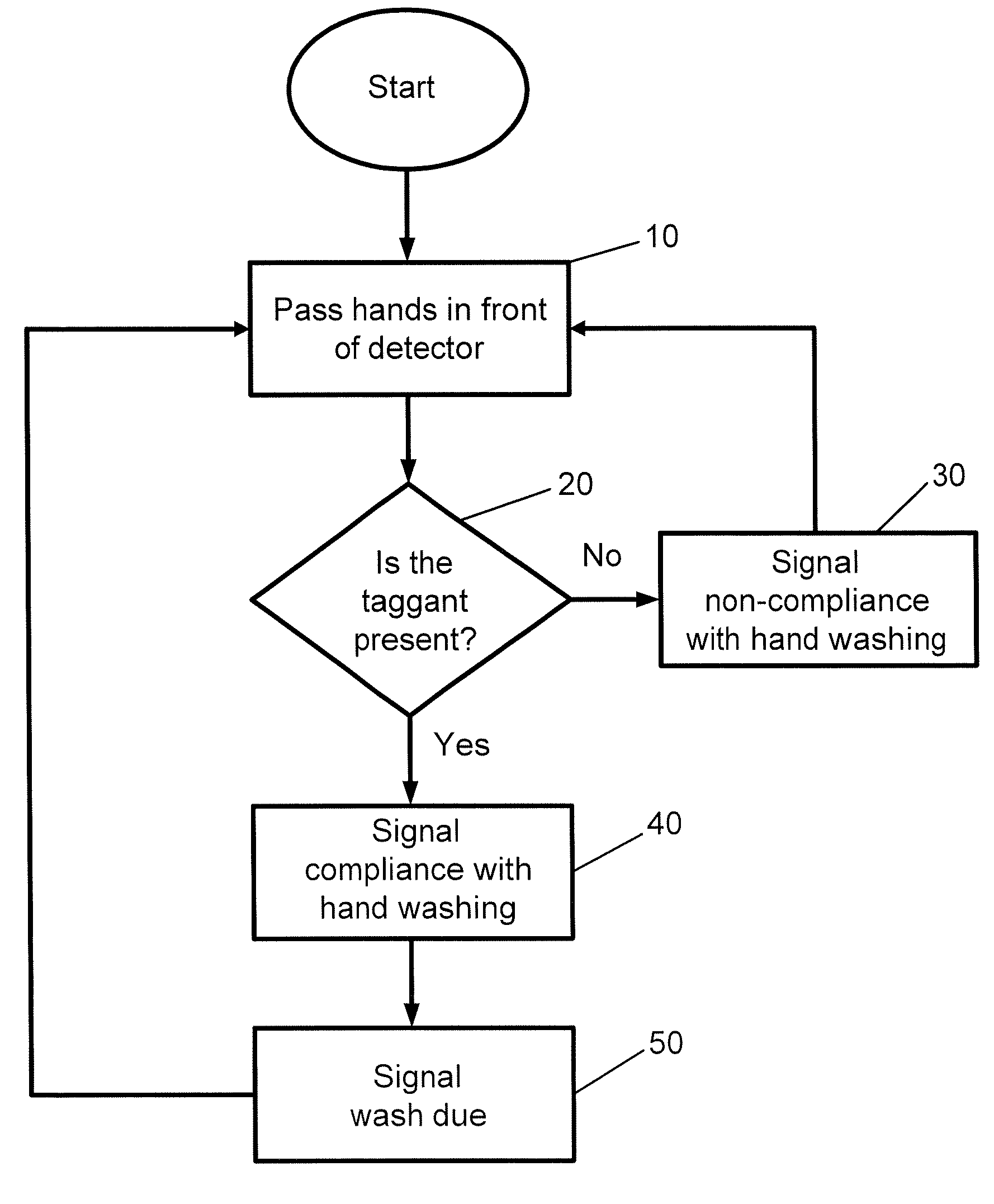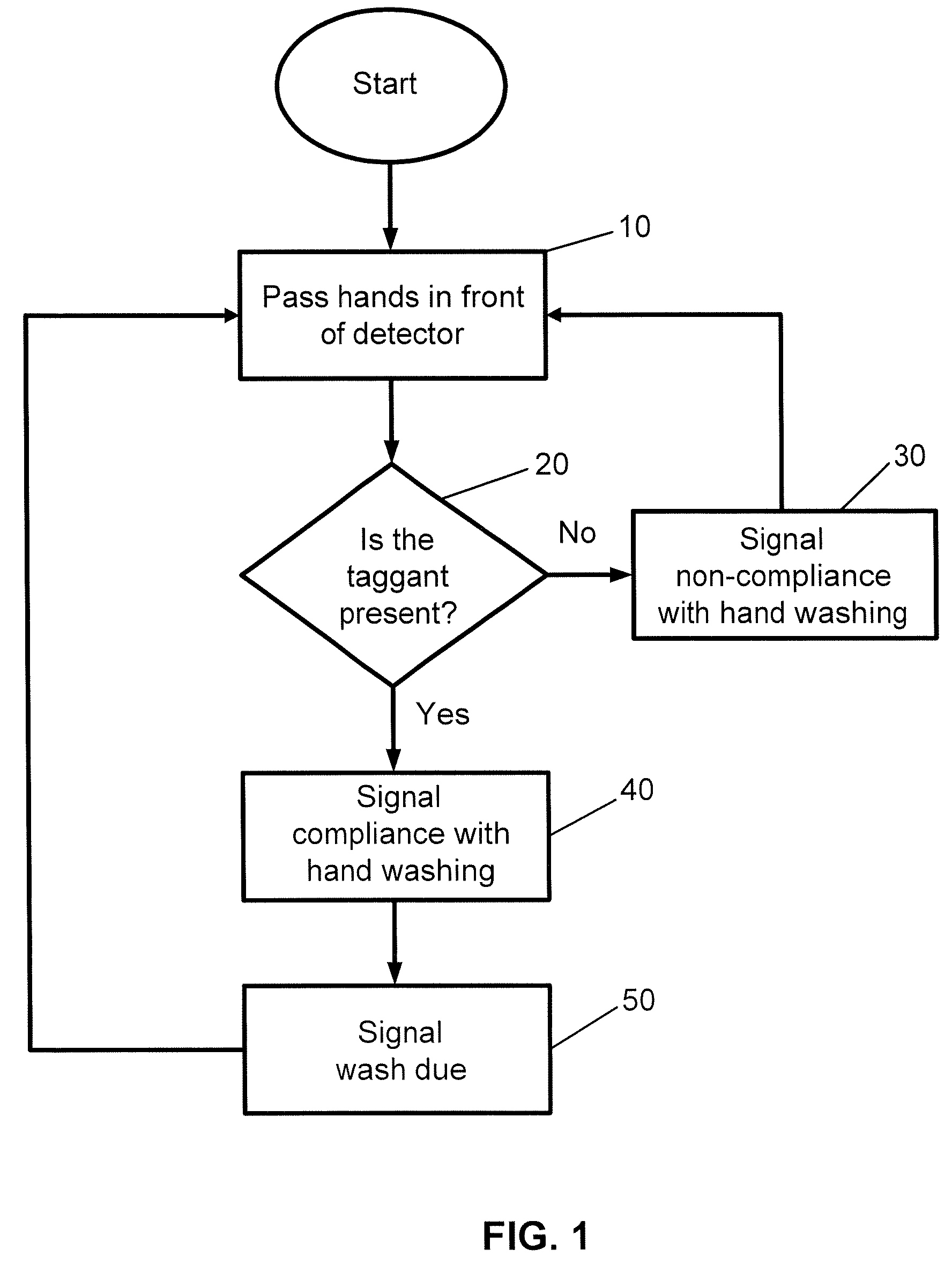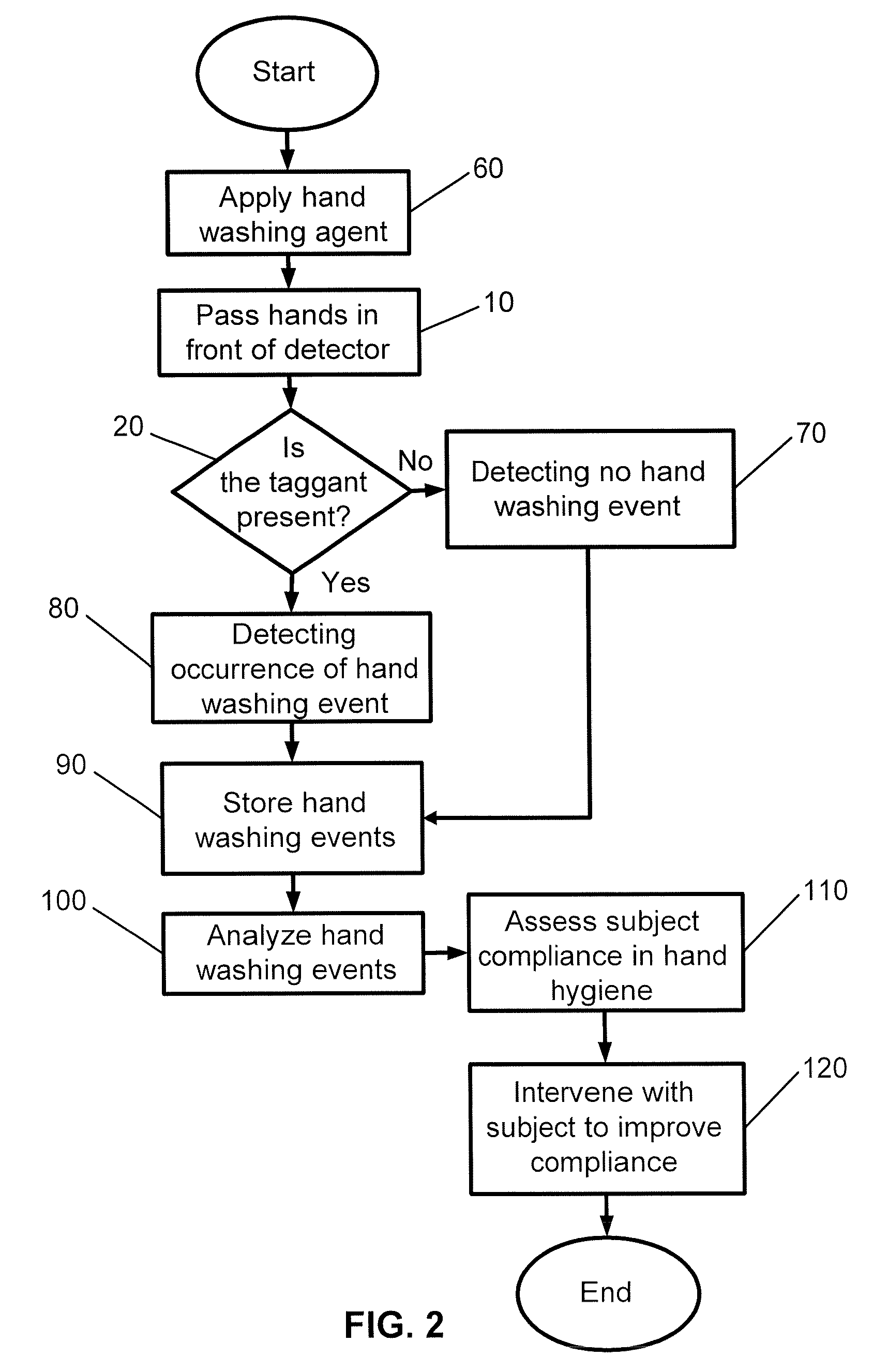Hand washing compliance detection system
a technology of compliance detection and hand washing, applied in the direction of signalling system, instruments, health care resources and facilities, etc., can solve the problems of increasing the number of new antimicrobial agents to treat them, threatening the u.s. healthcare system and the welfare of its citizens, and the serious problem of nocomial infections due to resistant organisms, etc., to achieve cost-effective and frequent effects
- Summary
- Abstract
- Description
- Claims
- Application Information
AI Technical Summary
Benefits of technology
Problems solved by technology
Method used
Image
Examples
example 1
[0079]In one embodiment, a healthcare worker would dispense an adequate amount of hand soap or surgical scrub and vigorously wash the hands with water to release the encapsulated taggant. Alternatively, the microcapsules could be incorporated into “waterless” hand washing products. Prior to washing the hands, the healthcare worker would activate the detector, which would be worn in a conspicuous place so that patients could observe it, by means such as pushing a button, and then slowly wave the hands in front of the device after washing (either before or after drying). Activation of the device would result in samples of air being drawn into the device and analyzed for the presence of the taggant. When the hands are slowly placed in front of the device, a sample of air (gas) containing the taggant would be detected and a conspicuous light would turn from red or yellow to green. This light would remain green for a period of time (such as 10 minutes) so that the patient would be assure...
PUM
 Login to View More
Login to View More Abstract
Description
Claims
Application Information
 Login to View More
Login to View More - R&D
- Intellectual Property
- Life Sciences
- Materials
- Tech Scout
- Unparalleled Data Quality
- Higher Quality Content
- 60% Fewer Hallucinations
Browse by: Latest US Patents, China's latest patents, Technical Efficacy Thesaurus, Application Domain, Technology Topic, Popular Technical Reports.
© 2025 PatSnap. All rights reserved.Legal|Privacy policy|Modern Slavery Act Transparency Statement|Sitemap|About US| Contact US: help@patsnap.com



